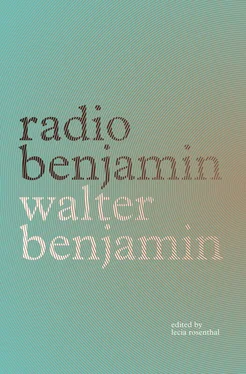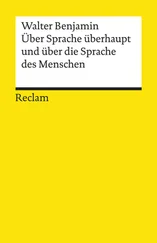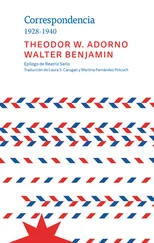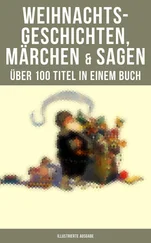Such a scrutiny must not cause us to overlook the obvious issue at hand: technology. It would behoove us to leave all sensitivities aside and to state the matter outright: the radio, in relation to the theater, represents not only the newer, but also the more exposed technology. It cannot yet harken back to a classical epoch, as can the theater; the masses that embrace it are much larger; and finally and above all, the material elements on which its equipment is based, and the intellectual elements on which its programs are based, are closely intertwined to the benefit of the listeners. For its part, what does the theater have to offer? The use of a living medium, nothing more. Perhaps the crisis facing the theater stems from no question more important than this: What does the use of a living person contribute to the theater? In response, two starkly contrasting notions arise — one reactionary and one progressive.
The first sees itself in no way obliged to take notice of the crisis. From its perspective, the harmony of the whole is and remains unclouded, with man as its representative. It regards him as being at the peak of his powers, as the lord of creation, as a personage (even in the case of a mere wage-earner). His realm is the culture of today, over which he reigns in the name of “humanity.” This proud, self-assured theater, which takes as little heed of its own crisis as it does that of the world; this haut-bourgeois theater (whose most celebrated magnate, however, has recently stepped down) — whether now proceeding with plebeian dramas in the new style, or with Offenbachian libretti, it always perceives itself as a “symbol,” a “totality,” a “total work of art.”
We are characterizing the theater of education and of distraction — so contradictory in appearance, yet merely complementary phenomena within the saturated stratum for which all things become stimuli. But in vain does this theater seek to compete with the attraction of million-mark films, replete with complicated machinery and massive crowds of extras; in vain does its repertoire encompass all epochs and all corners of the world, while broadcasting and cinema, with a much smaller apparatus, have room in their studios for ancient Chinese drama along with new forays into Surrealism. Competing with the technology available to radio and cinema is pointless.
But the ensuing controversy is hardly pointless. Above all, this is what is expected from progressive theater. Brecht, the first to theorize it, calls this theater “epic.” Epic Theater is thoroughly sober, especially regarding technology. This is not the place to expound on the theory of Epic Theater, much less to demonstrate how the development and structure of Gestus amount to nothing but a retro-transformation of the methods of montage so critical to broadcasting and film — from a technological undertaking to a human one. Suffice it to say that the principle of Epic Theater, like that of montage, is based on interruption. Only here, interruption acts not as a stimulus, but as a pedagogical tool. It brings the action to a temporary halt, forcing the audience to take a critical position toward the proceedings and the actor to take a critical position toward his role.
Epic Theater pits drama’s laboratory against drama’s total work of art. It draws in a new way upon theater’s reliable old prospect — the exposure of those present. Its experiments revolve around man in the present crisis, man eliminated by radio and cinema, man, to put it somewhat drastically, as the fifth wheel of technology. This diminished, neutralized humanity is subjected to certain ordeals and evaluative tests. Consequently, events are alterable not at their climaxes, not through virtue and resolve, but only in their strictly habitual processes, through reason and practice. To construct from the smallest elements of behavior what Aristotelian dramatic theory refers to as “action”: that is the meaning of Epic Theater.
Epic Theater confronts conventional theater by replacing culture with training, and distraction with groupings. Concerning the latter, anyone who follows the changes in radio will be familiar with the recent efforts to more narrowly define listener blocs in terms of social class, interests, and milieu. Similarly, Epic Theater is attempting to cultivate a group of interested parties, who, independent of criticism and advertising, are keen to see their own concerns, including political ones, realized in a series of actions (in the above sense) by a consummately trained ensemble. Notably, this development has led to older dramas undergoing major transformations ( Eduard II; Dreigroschenoper ) while newer ones have been subjected to a kind of controversial treatment ( Jasager, Neinsager ); 4this may shed light on what is meant by replacing culture (of knowledge) with training (of judgment). Radio is particularly bound to take advantage of established cultural goods, which it does best through adaptations that not only correspond with technology, but also comply with the demands of an audience that is a contemporary of its technology. Only thus will the apparatus remain free from the halo of a “gigantic educational enterprise” (as Schoen puts it), 5scaled back to a format fit for humans.
“Theater und Rundfunk, Zur gegenseitigen Kontrolle ihrer Erziehungsarbeit,” GS, 2.2, 773–6. Translated by Jonathan Lutes.
Published in Blätter des hessischen Landestheaters in May, 1932.
1Brecht’s Der Lindberghflug [Lindbergh’s Flight], with music by Kurt Weill and Paul Hindemith, based on Brecht’s radio play Der Flug der Lindberghs [The Flight of the Lindberghs] (1930); Das Badener Lehrstück vom Einverständnis [The Baden-Baden Lesson on Consent], cowritten by Brecht with Elisabeth Hauptmann and Slatan Dudow, with music by Hindemith (1929); and Der Jasager [He Who Said Yes], by Brecht with music by Weill (1930); and Brecht’s Der Neinsager [He Who Said No] (1930).
2Elisabeth Hauptmann (1897–1973) was a German writer who collaborated with Brecht on works including The Threepenny Opera (1928) and Happy End (1929).
3On Benjamin’s collaboration with Wolf Zucker, see, in this volume, “A Pay Raise?! Whatever Gave You That Idea!” (292), and “Listening Models” (373).
4Brecht’s Eduard II [Edward II] (1924); Dreigroschenoper (Threepenny Opera) (1928); Der Jasager [He Who Said Yes], and Der Neinsager [He Who Said No].
5See Benjamin, “Gespräch mit Ernst Schoen” (GS, 4.1, 548); “Conversation with Ernst Schoen” (trans. Thomas Y. Levin in The Work of Art in the Age of Its Technological Reproducibility and Other Writings on Media , ed. Michael Jennings et al. [Cambridge, MA: Harvard University Press, 2008], 397). Art in the Age of its Technological Reproducibility and Other Writings on Media (Cambridge, MA: Harvard University Press, 2008), 398.
CHAPTER 42. Two Kinds of Popularity
Fundamental Principles for a Radio Play
The radio play What the Germans Were Reading While Their Classical Authors Were Writing, a few samples of which have been excerpted for readers of this issue, attempts to take into account some fundamental considerations on the popularity to which radio ought to aspire in its literary dimension. 1For all of radio’s revolutionary aspects, it is in relation to our understanding of popularity that it is, or should be, most innovative. According to the old conception, popular representation — no matter how valuable it may be — is derivative. And that is easy enough to explain, given that before radio there were hardly any forms of publication that actually correlated to popular or educational aims. There was the book, the lecture, the newspaper, but these forms of communication in no way differed from those through which the progress of scholarly research was disseminated among circles of experts. Consequently, popular representation was undertaken in scholarly forms and had to forgo its own original methods. It found itself constrained to clothe the content of certain domains of knowledge in more or less appealing forms, in some cases relating it to shared experience and common sense; but what it produced was always secondhand. Popularization was a subordinate technique, and public estimation of it testified to this fact.
Читать дальше












